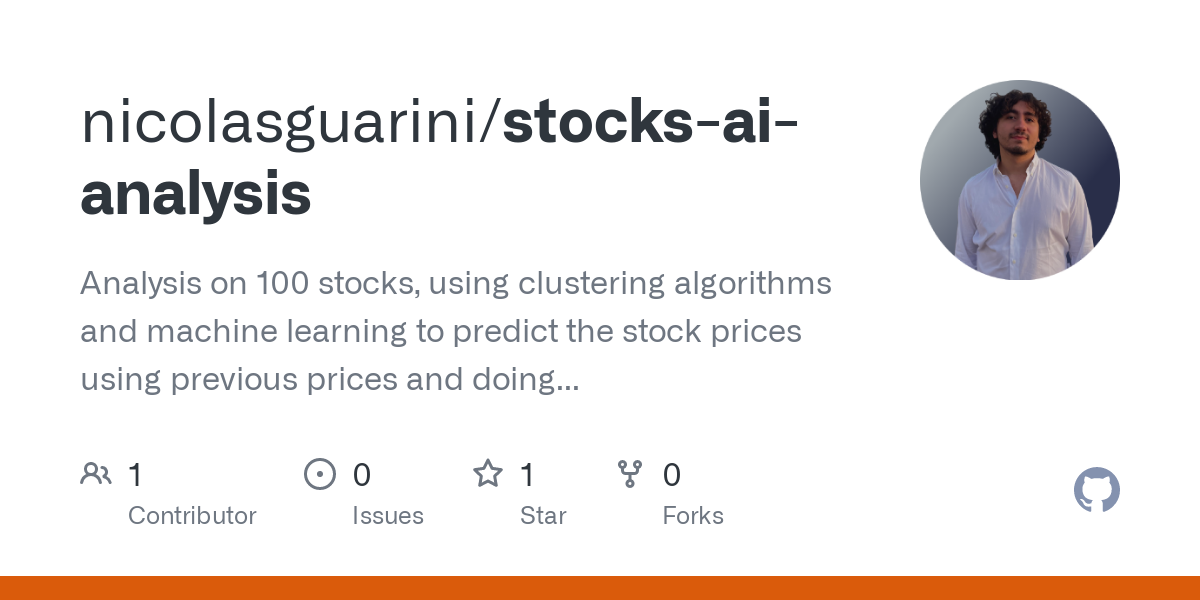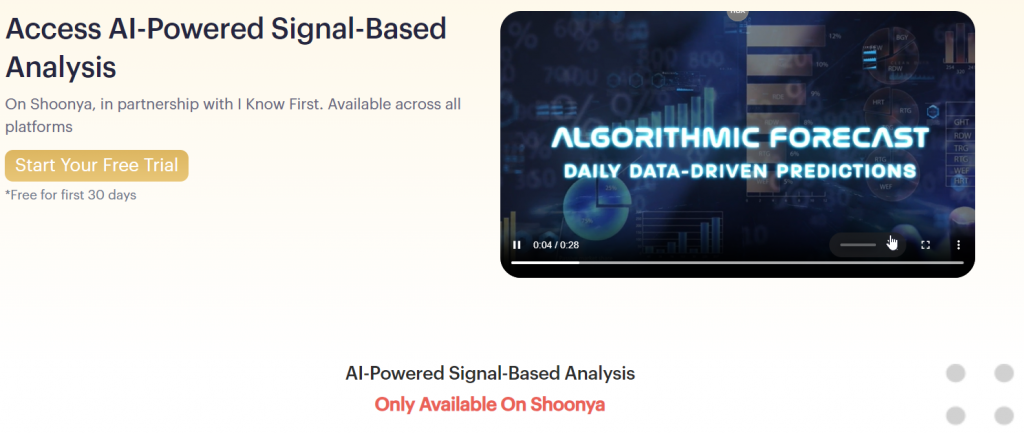20 Good Ways For Choosing AI Stock {Investing|Trading|Prediction|Analysis) Sites
20 Good Ways For Choosing AI Stock {Investing|Trading|Prediction|Analysis) Sites
Blog Article
Top 10 Tips To Assess The Market Coverage For Ai Trading Platforms For Stock Prediction And Analysis.
Market coverage plays an important aspect in evaluating an AI software for stock prediction and analysis, as this will determine the access you have to a broad range of assets and financial markets. A platform that offers comprehensive market coverage will allow you to diversify your portfolios, explore global trading opportunities, and adjust to different strategies. Here are 10 best strategies to help you assess the market coverage provided by these platforms.
1. Evaluate Supported Asset Classes
Stocks - Check that the platform you choose to use can provide coverage of the major markets for stocks (e.g. NYSE NASDAQ LSE HKEX) as well as includes mid-caps, small-caps and large-caps.
ETFs. Check that the platform has a wide selection of ETFs, so you have a diverse exposure.
Options and Futures: Find out if the platform supports derivatives such as options or futures, as well as other products that leverage.
Commodities and Forex. See if there are forex pairs available, as well as precious metals, commodities for energy, and agricultural commodities.
Cryptocurrencies Make sure the platform can support popular cryptocurrencies like Bitcoin, Ethereum, and altcoins.
2. Check geographic coverage
Global markets. Ensure your platform covers the most important global markets including North America Europe Asia-Pacific and emerging markets.
Concentrate on regional markets: Find out if a platform is focused on certain markets or regions that are aligned with your trading goals.
Local exchanges: Verify that your platform supports regional and local exchanges that match your needs or your business plan.
3. Think about comparing real-time data to delayed data Data that is delayed
The availability of real-time data is crucial to speed up decision-making especially in trading that is active.
Delayed data - Find out if delayed data is free or is available at a reduced price. This may be sufficient for investors who are looking to invest in the long term.
Data latency. Examine whether your platform reduces the amount of latency for real-time feeds.
4. Evaluate Historical Data Availability
The depth of the historical data If the platform is available, ensure that it has extensive historical data (e.g. 10, more than 10 years) to backtest and analyze.
Granularity: Determine whether the historical data contains intraday granularity as well with weekly, daily and monthly.
Corporate actions: Examine for evidence that data was accounted for in the past. Dividends or stock splits all other corporate actions must be included.
5. Review market depths and make an order for books
Data Level 2: Make sure that the platform provides Level 2 (order book depth), for better price discovery.
Be sure to check for live bidding and spreads of asking. This will ensure that pricing is accurate.
Volume data - Verify whether the platform provides extensive volume data to analyze the market's activities and liquidity.
6. Review the how much coverage is available for Indices & Sectors
Major indices - Make sure your platform can support major indices, like the S&P 500 (e.g. NASDAQ 100 or FTSE 100), for index-based benchmarking.
Information from specific industries to perform a focused analysis, verify whether the platform contains data for certain industries (e.g. health care, technology, etc.).
Customized indexes. Find out if the platform allows you to create and track custom indexes based on the criteria you define.
7. Test the combination of Sentiment and News Data
News feeds - Ensure your platform includes the most up-to-date, market-driven news feeds (e.g. Bloomberg, Reuters).
Sentiment analysis: Determine if there are tools for sentiment analysis that are based on social media posts, news articles or other data sources.
Strategies based on events: Check whether the platform supports event-driven trading strategies (e.g. earnings announcements, economic reports, etc.).
8. Verify Multi Market Trading Capabilities
Cross-market trading: Make sure the platform supports trading across a variety of markets and asset classes through an interface.
Currency conversion: Find out if your platform supports multi-currency trading and automated currency conversion.
Support for various time zones: Make sure the platform allows trading on global markets in different time zones.
9. Examine Alternative Data Sources
Alternative data: Check whether the platform is able to integrate different sources of data (e.g., satellite imagery, internet traffic, credit card transactions) for unique insight.
ESG data - Check that the platform is able to provide environmental, social, and governance information (ESG). This is important for the socially conscious investment.
Macroeconomic data: Ensure the platform provides macroeconomic indicators (e.g. inflation, GDP, or interest rates) to conduct a fundamental analysis.
Review Market Reputation and User Feedback
User feedback: Use reviews from users to assess the reliability of the platform and market coverage.
Reputation in the industry: Check whether the platform has been recognized by industry experts for its market coverage.
Case studies: Look for case studies, testimonials, and other details that highlight the platform's effectiveness on specific market segments or asset types.
Bonus Tips
Trial period: Try an unpaid trial or demo to evaluate the market coverage and data quality.
API access: Ensure that the API is available on the platform that permits you to access programmatically market data for custom analysis.
Support for customers: Ensure that the platform has support for market-related inquiries or data issues.
With these suggestions and techniques, you will be able to assess the market coverage of AI stock predicting/analyzing trading platforms, ensuring you choose a platform that provides access to the markets and information that you require for successful trading. A comprehensive market coverage allows you to diversify your portfolio and discover the possibilities of your portfolio. It also helps you adapt to changes in market conditions. Follow the top rated copyright ai trading bot advice for site advice including ai trading bot, incite ai, ai chart analysis, ai copyright trading bot, best artificial intelligence stocks, coincheckup, invest ai, ai stock market, ai hedge fund outperforms market, chart analysis ai and more.
Top 10 Tips To Evaluate The Community And Social Features In Ai Platform For Predicting And Analyzing Stocks
To understand how users learn, interact and share insights with each other, it's important to evaluate the social and community-based features of AI trading and stock prediction platforms. These features are a great method to improve user experience, and offer invaluable support. Here are the top 10 tips to analyze social and community aspects of these platforms.
1. Active User Community
Tips: Ensure that the platform is in use and has users who are regularly participating in discussion, sharing insights or giving feedback.
What is the reason: A vibrant community indicates a vibrant community where people can learn and grow together.
2. Discussion Forums and Boards
Tips: Assess the level of activity and quality of discussion forums or message boards.
Why Forums are fantastic opportunity for users to share ideas, discuss trends, and ask questions.
3. Social Media Integration
Tip - Check whether the platform can be integrated with other social media sites (e.g. Twitter and LinkedIn) to provide updates and insights.
Why: The integration of social media with other platforms can boost engagement and provide current market information in real time.
4. User-Generated Content
Search for features that permit users to share, create, and modify content.
Why: User-generated material fosters collaboration and provides diverse perspectives.
5. Expert Contributions
Tips: Check if there are contributions by experts from the industry, such as AI experts or market analysts.
The reason: Expert opinions add authenticity and depth to the discussions in the community.
6. Chat and real-time messaging
Tips: Check the availability of instant chat and messaging options to allow users to chat in real-time.
Why? Real-time interactions facilitate quick information exchange and collaboration work.
7. Community Moderation Assistance
TIP: Examine the degree of support and moderating offered by the community.
What's the reason Positive and respectful atmosphere is created through effective moderation. Customer support is quick to resolve user problems.
8. Webinars and events
TIP: Find out whether your platform offers live sessions, Q&As or webinars.
What are the benefits: These events provide the opportunity to gain knowledge and provide direct contact with professionals in the industry.
9. User Reviews and Commentaries
TIP: Look out for features where users are able to provide feedback on the platform, its community and features.
The reason: Feedback from users helps to determine strengths and areas for improvement in the ecosystem.
10. Rewards and Gamification
Tip: Check if there are gamification features (e.g. badges, leaderboards), or rewards for participation.
Gamification is an effective way to increase engagement of users with the community.
Bonus tip: Security and privacy
To safeguard the information of users and their interactions, ensure that community and social features are protected by secure privacy and security controls.
You can assess these features to determine whether the AI trading and stock prediction platform offers the community you need and helps you trade. Take a look at the top rated best ai for trading blog for more info including ai stock picker, best artificial intelligence stocks, stock analysis tool, best stock advisor, stock analysis app, free ai trading bot, stocks ai, ai stock price prediction, best ai stock, stock ai and more.